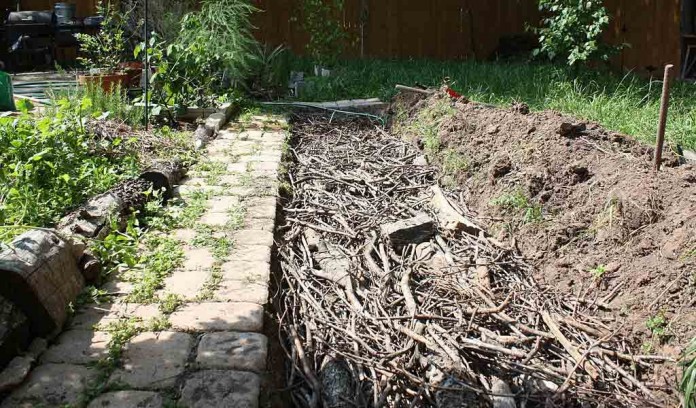
Somewhat related to raised beds, learn what the hugelkultur gardening technique is.
What is hugelkultur?
Pronounced hoog-el-cull-tour, a German word meaning “hill culture,” hugelkultur is a gardening technique that uses rotting woody debris as well as additional organic matter to build beds for planting, as explained by Washington State University Extension.
Hugelkultur is a way for gardeners to reverse nature’s natural decaying process.
How does hugelkultur work?
In a hugelkultur bed, organic matter breaks down over time, giving nutrients, warmth and moisture to plants. It’s a way to take waste — both the rotting wood and organic matter — and using it to grow plants.
The decaying wood will retain water, but it will also break down in years to come. You can add additional organic matter when needed.
What materials do I need to start hugelkultur beds?
The main supplies you need are wood and organic matter.
For wood, use rotting logs, branches and twigs.
Recommended woods:
- Alders
- Cottonwood
- Douglas fir
- Hemlock
- Maple
Woods to avoid:
- Black locust
- Black walnut
- Cedar
For organic matter, use:
- Compost
- Manure
- Straw
- Hay
- Sawdust
How do I build a hugelkultur bed?
Washington State University Extension Clallam County outlines the steps for creating a hugelkultur bed:
- Choose your site. If you plan to grow garden vegetables, make sure the site gets adequate sunlight.
- Remove sod from site. Set sod aside. You can also dig a trench, if desired.
- Lay logs or wood chunks into the trench where the sod was. Fill in cracks with vegetative materials.
- Top the logs with organic materials: compost, manure, straw and/or hay.
- Make additional alternating layers of woody materials and organic materials. Start with the largest materials and as you build up, start using smaller and smaller pieces.
- Once your bed is the desired height, place sod on top of the pile, grass side down.
- Cover the bed with good quality soil, or soil from the trench if you dug one.
- Plant directly into the soil, or plant a cover crop. Mulch or jute netting is helpful for keeping plants moist and stable.
Which vegetables should I plant in my hugelkultur beds?
The structure of hugelkultur beds allows room for deep roots, and they have great water-holding capacity and irrigation.
Washington State University Lewis County Extension recommends planting:
- Cucumbers
- Tomatoes
- Pumpkins
- Squash
- Potatoes
- Root vegetables










